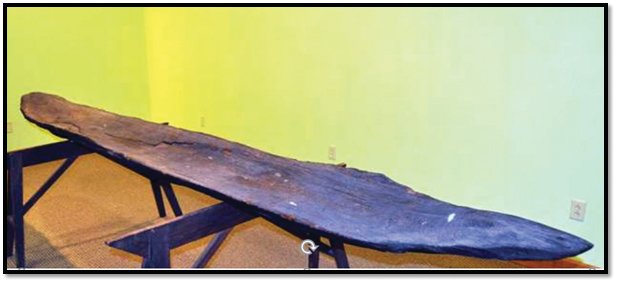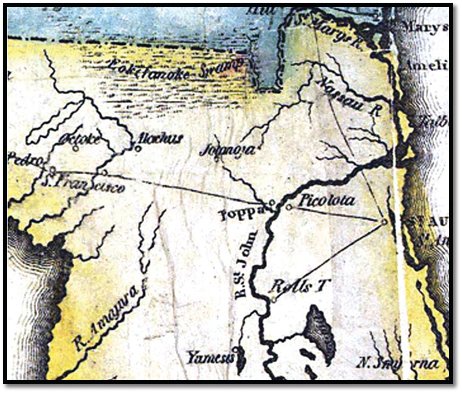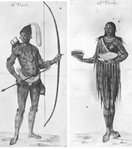Celebrating Clay County history: Paleo-Indians, Timucua, Creek and Seminoles
CLAY COUNTY – The county has many well-kept secrets, and one of the best kept is the fact that it is the locale of several significant archeological discoveries.
Many years back, when Fleming …
This item is available in full to subscribers.
Attention subscribers
To continue reading, you will need to either log in to your subscriber account, or purchase a new subscription.
If you are a current print subscriber, you can set up a free website account and connect your subscription to it by clicking here.
If you are a digital subscriber with an active, online-only subscription then you already have an account here. Just reset your password if you've not yet logged in to your account on this new site.
Otherwise, click here to view your options for subscribing.
Please log in to continueDon't have an ID?Print subscribersIf you're a print subscriber, but do not yet have an online account, click here to create one. Non-subscribersClick here to see your options for subscribing. Single day passYou also have the option of purchasing 24 hours of access, for $1.00. Click here to purchase a single day pass. |
Celebrating Clay County history: Paleo-Indians, Timucua, Creek and Seminoles
CLAY COUNTY – The county has many well-kept secrets, and one of the best kept is the fact that it is the locale of several significant archeological discoveries.
Many years back, when Fleming Island and Eagle Harbor developments were just in the planning stages, archeological studies of the area were undertaken. As part of the development plan, archeologists were hired to go out and look at the sight to gauge if there was anything of significance in the area.
There was.
Paleo-Indians (people living in Florida before the Timucua) made Clay County their home.
Refuse mounds, as well as burial mounds, graced the shores of our waterways. Their exact location is a state secret, literally. You cannot get the GPS coordinates for the sites from the state. This is so because of the fear that pothunters and others with bad intentions will dig up the mounds and trash middens (another term for refuse mound). By definition, a pothunter is a person who seeks objects of archaeological interest or value for personal use or benefit, especially by unscientific or illicit methods.
Dating back to about 1900, one such pothunter named Leigh Pearsall, a Melrose, Florida resident, did just that. He dug up several mounds in Clay and Putnam counties even though he was not a professional archeologist. His methods were crude and haphazard at best. The artifacts he found were never to be seen again. Such cultural and scientific treasures as these were most likely lost to time, becoming the property of people to whom they were sold or given. Back then, and sometimes even today, the burial grounds of Native Americans were not respected or protected.
The detailed names and locations of two of the mounds discussed here will not be given, lest folks be tempted. These two mounds are scientifically significant in the study of our local Paleo-Indians and later the Timucua. Obscurity is often the best defense.
One such mound is a refuse mound – that’s right, it is an ancient trash heap. Archeologists also refer to similar mounds as shell mounds because that is the primary composition. The archeologist surmised, from the size and depth of this local mound, that the heap had been used for a significant time. Layers of shells, animal and fish bones and potshards (from later Native Americans) filled the mound. The oldest layers are the deepest down. Disturbing a mound messes up these layers, rendering it almost useless to an archeologist in terms of assessing age. Sarah Miller of Florida Public Archeology Network once said that one scoop of overturned earth at a sensitive site by an untrained person can destroy hundreds or maybe thousands of years of information.
The local mound is very significant because it is the only known and scientifically tested freshwater shell midden in the St. Johns River area. Most shell mounds in the area are filled with saltwater or brackish water shells. Without giving away the location, remember that Black Creek is a freshwater creek. This allowed for the growth of freshwater shellfish in the area and the harvest of the same by the indigenous peoples. This mound is on the National Register of Historic Places and the Florida Master Site file.
Another mound nearby is a sand mound. In northeast Florida, sand mounds are usually the foundation of a structure or a burial mound. This mound might be both. Plus, this mound was UNDISTURBED and that is VERY SIGNIFICANT because most mounds in Clay County have been disturbed or demolished before experts arrive.
On March 2, 1990, this second location was added to the U.S. National Register of Historic Places and the Florida Master Site file. In the mound were St John Period II ceramics, chert flakes, and nodules of hematite (red ochre). Chert is a sedimentary rock consisting almost entirely of silica and can form in a variety of ways.
From 1950 to 1952, Dr. John M. Goggin, a well-respected archeologist, conducted a study of the site of a Spanish-era fort near the Bayard Conservation area, known as Fort San Francisco de Pupo. When Goggin dug his trenches he discovered Native American pottery from the “Orange Series” (which dates back to 1000 BC). This means that the site at Fort Pupo was used by early human inhabitants before the land there became a Spanish fort. It is an archeologically significant site, now on private property.
As Goggin dug his trenches he found that after the original use, the site lay untouched for about 2,000 years before the Spanish troops’ use of the area. By looking at pottery and the artifacts retrieved, Goggin created a timeline of the site’s use. He found a total of 1,532 artifacts in all. Some were wonderful objects like locks, a gun barrel, pipes and beads. Others were ordinary refuse like charred corncobs and even a bison bone – yes, bison in Florida.
What if you should stumble across one of these mounds or middens? Most of them in Clay County are on private property so, first, ask yourself, “Am I trespassing?” If so, keep moving. Next, remember that it is illegal to dig up a burial site anyway. Plus, it is just plain bad karma to mess with such wonderful and sacred things as a burial mound or other archeological sites. Just take a good look, walk away, and challenge yourself to make the location your well-kept secret.













